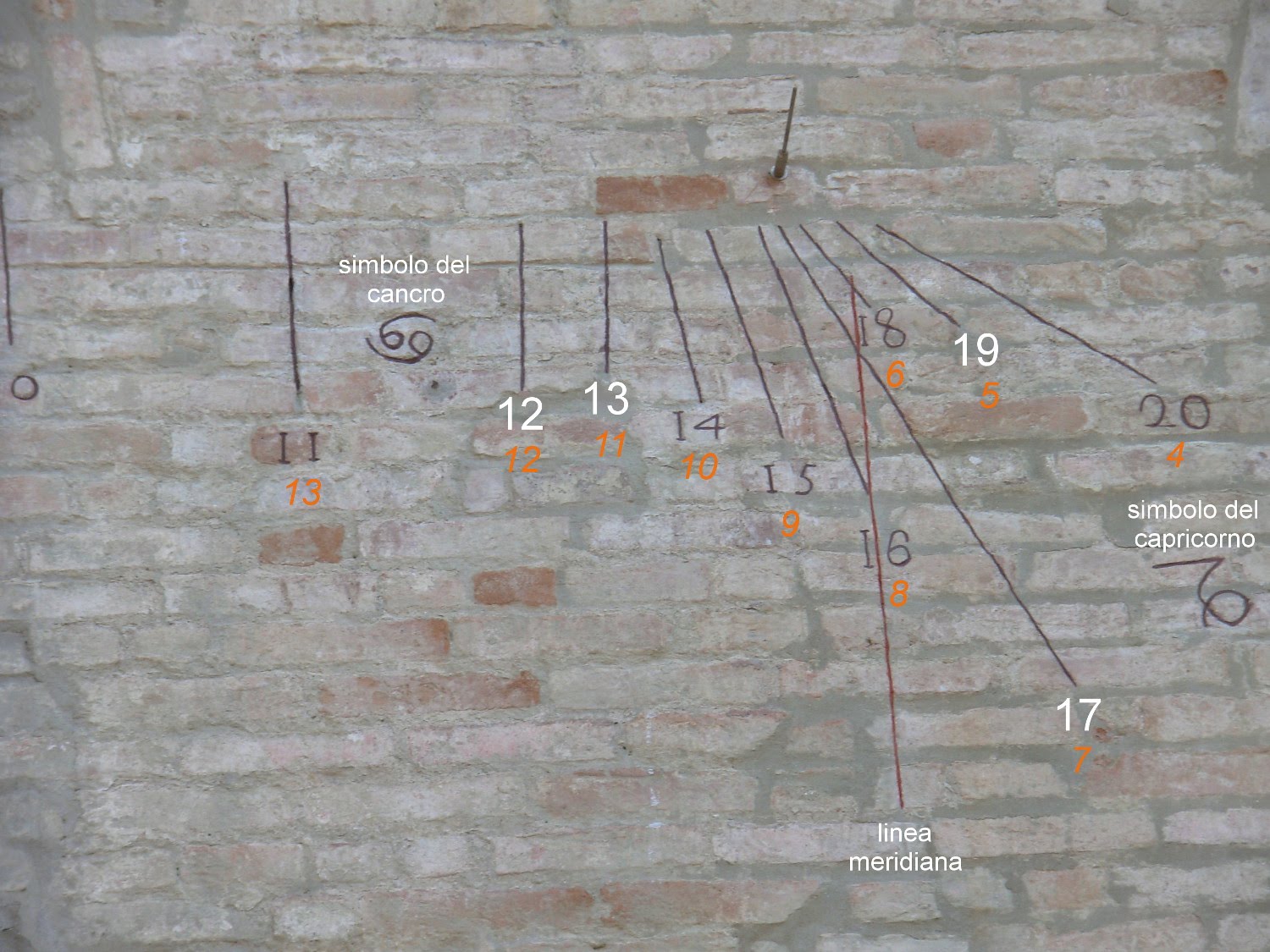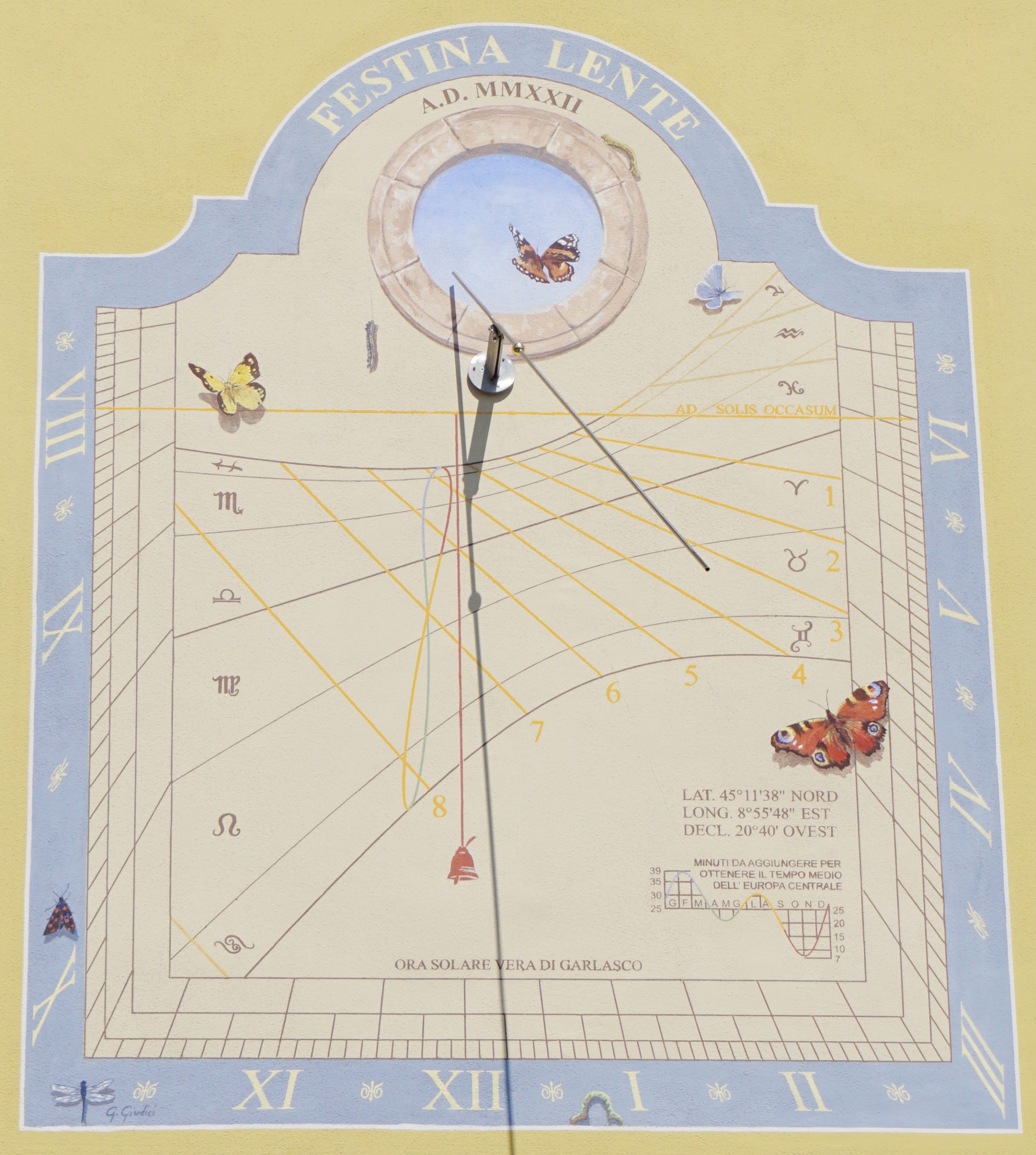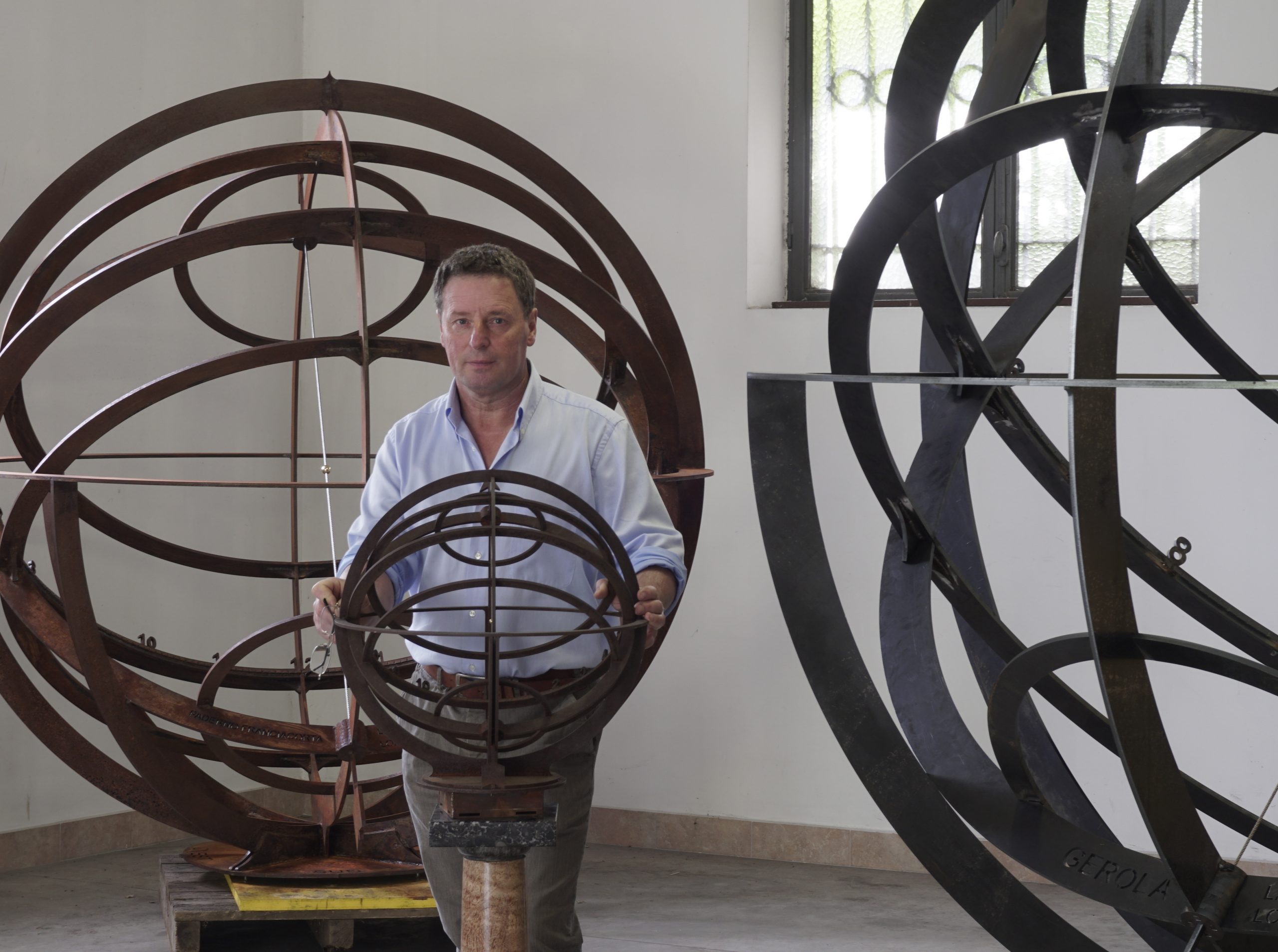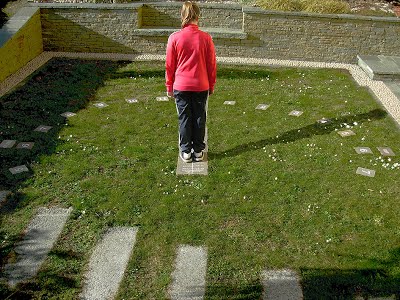
Functional restore to Bobbio domus square sunidal
The detachment of the plaster during the renovation of a house has brought to light what remains of an ancient dial engraved directly on the brick wall, the layout of a sundial with the Italic bell tower time system and the meridian line.
The intervention was limited to the cleaning of the incisions, to their mapping and to the relief of the declination of the wall, so as to trace back, through a reverse design procedure, to the size and the original position of the stylus.
After repositioning the stylus, the lines were painted with colors following small traces of pigment found in the incisions, without correcting some inaccuracies in the diagram and without completing the missing parts, keeping everything as it was found.

The first image shows the finding of the incisions after removing the plaster that covered them.

The second image shows the quadrant again functioning as it was centuries before


In the last image the overlapping numbers in white mark the lost numbers, while the orange numbers directly indicate the respective hours of light that are missing at sunset.
The Italic time system, one of the most important systems of the past, used in the Italian peninsula from 1200 to 1800, was so widespread in our regions that it was known throughout the West under the name of “italic” (with this time system it was measured the time in “I Promessi Sposi”), it divided the day into 24 hours from 60 minutes each and according to the biblical tradition it placed the twenty-fourth hour at sunset, moment in which one began to count the hours of the new day, indifferently both winter and summer, following day by day the moment of sunset over the seasons.
This time system, which today may seem somewhat bizarre, with its lines that do not converge in a center like a fan, but seem to be wrapped around the stylus without an apparent sense, allowed to know how many hours of light were still available before of darkness, information of enormous importance for the society of that era, practically still without artificial light and which depended on the natural rhythms of day and night.
During the 1600s the variant called now the Italic from bell tower that is engraved on this quadrant came into use, which differs from the first only for the fact that the twenty-fourth hour was delayed by half an hour compared to the actual sunset of the sun on the horizon, making it coincide with the end of twilight and the beginning of darkness. The mechanical clocks of the bell towers and towers, already widespread in the 1600s, reiterated with the ringing of their bells the imminent nighttime closure of the access gates to the cities and attracted the faithful to the evening Angelus prayer.



